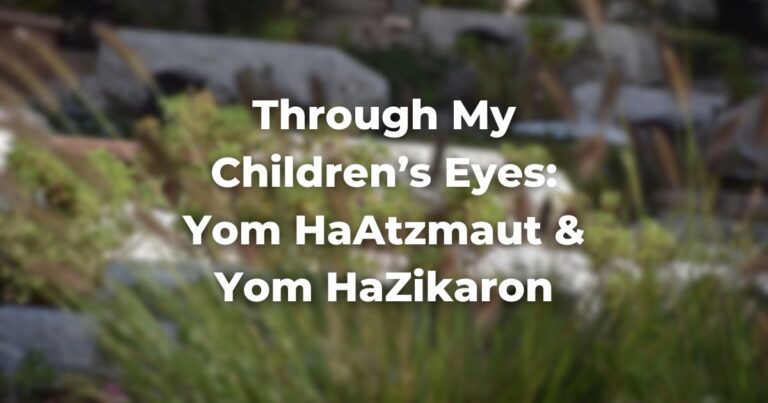In Jewish tradition, Aaron—Moses’ brother and the first high priest—is the model of the pursuit of peace. Pirkei Avot 1:12 (Ethics Of The Sages) teaches us the following:
Hillel used to say: be one of the disciples of Aaron, loving peace and pursuing peace, loving humankind and drawing them close to the TorahRefers to the first five books of the Hebrew Bible, the Tanakh, also called the Five Books of Moses, Pentateuch or the Hebrew equivalent, Humash. This is also called the Written Torah. The term may also refer to teachings that expound on Jewish tradition. Read more.
It’s easy to say that we love peace.
Pursuing it is far more demanding, given the risks, efforts, and inconveniences of such a pursuit. Pirkei Avot challenges us to emulate Aaron, who loved and pursued peace out of his love for people and his desire to draw them closer to the Torah.
Yet, how did Aaron pursue peace?
Avot D’Rabbi Natan (Ethics Of The Sages According to Rabbi Nathan) is a Talmudic-era commentary on Pirkei Avot that elucidates its teachings. It provides two clear examples of how Aaron would love and pursue peace:
When Aaron was walking down the road, and he came upon a wicked person, he would wish him Shalom. The next day, when that man wanted to sin, he would [stop himself and] say: “Alas! How will I be able to look Aaron in the face? I will be so embarrassed when he wishes me Shalom.” And so, this man would stop himself from sinning.
Similarly, when two people were fighting with one another, Aaron would go and sit next to one of them and say: “Look at the anguish your friend is going through! His heart is ripped apart and he is tearing at his clothes. He is saying, ‘How can I face my old friend? I am so ashamed, for I betrayed his trust.’”
Aaron would sit with him until his rage subsided. Then Aaron would go to the other person in the fight and say: “Look at the anguish your friend is going through! His heart is ripped apart and he is tearing at his clothes. He is saying, ‘How can I face my old friend? I am so ashamed, for I betrayed his trust.’”
Aaron would sit with him until his rage subsided. When the two people saw each other, they would embrace and kiss one another.
(Avot D’Rabbi Natan Version A, Chapter 12)
In both cases, Aaron sets aside truth for the sake of achieving peace.
In the first case, he ignores the Torah’s commandment to rebuke your fellow citizen for sinful behavior, choosing instead to greet a wicked person with a blessing of peace as if he weren’t wicked (see Leviticus 19:17). In the second case, Aaron actively lies to both people who are in conflict to encourage them to forgive each other.
Aaron’s behavior is presented as worthy of praise and emulation. We can be students of Aaron by going to extremes like he did for the sake of peace.
Yet closer analysis raises big concerns about the wisdom of Aaron’s approach.
First, Aaron’s strategy in both cases entails the great risk of backfiring.
The wicked person could just as easily read Aaron’s gracious gesture as justification for continuing to do bad things: “Aaron has no problem wishing me well, why should I care if anyone else rebukes me for my behavior?” Two people in conflict might easily figure out that Aaron manipulated them in the interests of their reconciliation; Aaron’s sincerity notwithstanding, one or both might be further enraged by his subterfuge and turn that rage on each other or on Aaron.
More importantly, Aaron’s sacrifice of truth for the sake of reconciliation could prevent either or both warring parties from accepting responsibility for their part in the conflict.
His strategy allows each person to assume that he is the aggrieved, victimized one deserving of the other’s unconditional apology. What if they both bear responsibility, or worse, what if one of the two people is solely responsible? This kind of well-meaning deception could lock one or both into chronic grievance and a perverse sense of victimization. These are hardly good influences for sustaining peaceful relationships in the future, even if they promote peace in the short run.
Pursuing peace at the expense of justice ultimately creates more opportunity for dissent, conflict and violence.
Perhaps an answer to these concerns can be found in Pirkei Avot itself.
It makes clear that we should strive to be among Aaron’s disciples, not that we should try to be exactly like Aaron.
A disciple learns from a teacher how to think and behave, then must independently apply what he or she learned. Aaron taught by example how important the pursuit of peace is by being willing to pursue it seemingly at all costs. Emulating such an example means striving to apply its underlying values without necessarily copying it blindly.
A good student not only does what one’s teacher modeled but at times critically questions and diverges from that modeling by asking tough questions about the teacher’s words and actions. Avot D’Rabbi Natan provides us with these two examples of Aaron’s pursuit of peace precisely to goad us into asking the kinds of questions that I mentioned above.
These stories of Aaron also provide us with a more basic lesson: bringing peace between people is inherently difficult, and at times nearly impossible. In our world that’s so rife with violence and hatred, Aaron isn’t showing us how to make peace so much as inspiring us to pursue it without despair.
Author
-

Dan Ornstein is the rabbi of Congregation Ohav Shalom, a writer and a teacher living with his family in Albany, New York. He is the author of Cain v Abel: A Jewish Courtroom Drama (Jewish Publication Society, 2020). Check out his website at www.danornstein.com
View all posts




